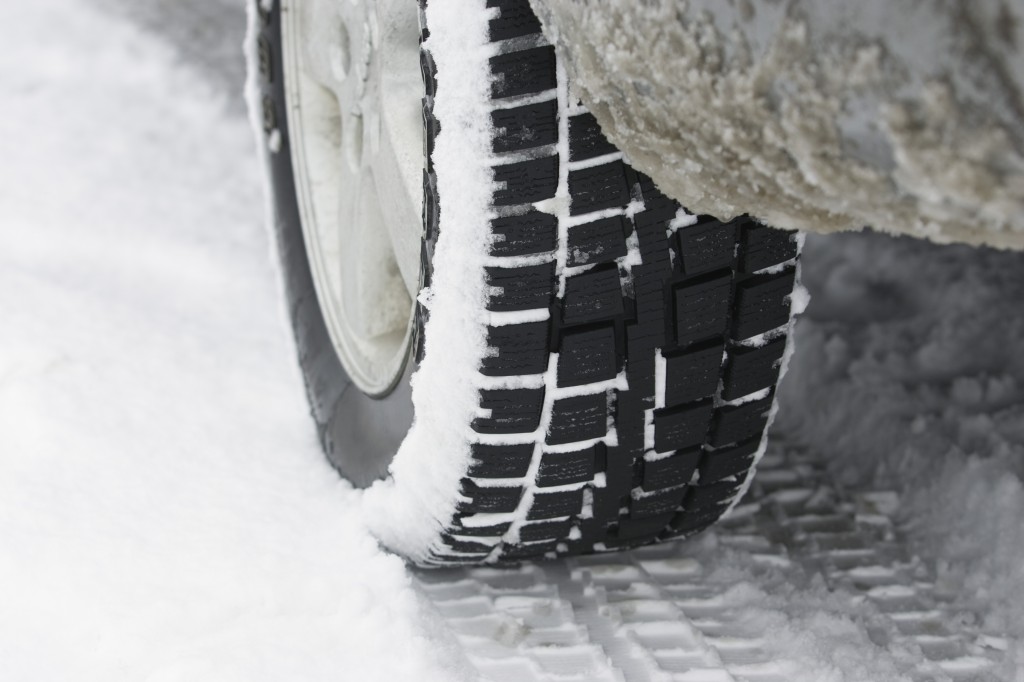As the temperatures turn colder and snow starts to fall, the dangers of driving on pavement covered in ice and snow increase. However, there are always a few tasks you can do to play your part in keeping drivers safe on the road. PTG Enterprises would like to remind our customers of the essential tips for staying safe this winter season. Read on for the recommended safety tips for your car’s safe winter driving this year. (more…)
Blog
Archive for the ‘Highway Safety’ Category
Tips for Safe Winter Driving
Thursday, December 19th, 2019Tips For Safe Driving In The Snow and Ice
Friday, December 21st, 2018Driving in the winter comes with many hazards and dangers, so it’s crucial to be extremely focused on the road and prepared for bad weather! Driving in the snow or on icy roads is not easy, and it’s important to remember to go slow and proceed with caution. Continue reading for more tips for driving this winter to ensure you make it to your destination safe and sound! (more…)
Driving Safety Tips For Autumn
Wednesday, November 1st, 2017
Each season brings its own set of hazards for drivers, here are our tips for safe driving in the fall.
Each season brings its own set of hazards for drivers, and it’s important to be aware of all the dangers out there so you can be as prepared as possible. Autumn’s hazards include children and school buses, darkness, deer, and unpredictable weather. (more…)
Maryland State Highway Administration Begins Work on Southbound I-81 Ramps
Friday, March 17th, 2017
On March 12th, the Maryland Highway Administration began construction on 17 southbound exit ramps on I-81. Improving the state of Maryland’s roads is a constant effort that requires time, money, and craftsmanship.
On March 12th, the Maryland Highway Administration began construction on 17 southbound exit ramps on I-81. Improving the state of Maryland’s roads is a constant effort that requires time, money, and craftsmanship. It also means staggering work days in order to make sure motorists do not run into overly heavy traffic during rush hour. This delicate balance of construction and travel is what creates such interesting conditions for the SHA, which works to improve roads all over Maryland. To learn more about this construction, read on.
The Dangerous Hazards of Driving in Autumn
Friday, October 28th, 2016
Most people associate dangerous driving conditions with Winter, specifically. But did you know there are many hazards that occur during Autumn, as well?
Most people associate dangerous driving conditions with Winter, specifically. But did you know there are many hazards that occur during Autumn, as well? There are actually several factors that come with Autumn weather that you, as a driver, should be wary of. Last week, we discussed why frost was a problem for many drivers and how you can avoid it. This week, let’s explore the dangers Autumn can present.
All You Need to Know About Roadway Icing
Thursday, October 20th, 2016
Roadway icing is probably a huge concern for you as we approach winter, so it’s imperative you know everything about it–how to spot it, how to avoid it, and how to deal with it.
Cold weather and colder mornings are slowly coming our way. Temperatures dipping down below freezing point can mean dangerous conditions for drivers as the roads get icy. Roadway icing is probably a huge concern for you as we approach winter, so it’s imperative you know everything about it–how to spot it, how to avoid it, and how to deal with it. Read on to learn all the basics about roadway icing.
Winter Driving Tips for Maryland Motorists
Monday, December 30th, 2013No matter who you are or what you drive, driving during the winter is always going to be a stressful, dangerous, experience once that snow or ice hits ground. It is the season with the most non-fatal and fatal auto-accidents. This year keep yourself as far out of harm’s way as possible by practicing some winter driving tips.

- Keep your energy high. Driving in slow moving, snowy conditions, will make you fatigued to begin with, so it is very important that you don’t get behind the wheel when you’re already tired. Make sure you don’t bundle yourself up too tight in clothes, or have the heat on past the point of comfort.
- Keep your tires inflated. Having reliable tires is one of the most important things when it comes to driving on snowy or icy roads. Make sure to check to see if you need new tires entirely because you will never need them more than this season. If you don’t, then you should regularly check to see if they’ve deflated at all.
- Do not use cruise control. Using cruise control when driving on icy or snowy roads can be very dangerous. Your cruise control cannot account for the dangers of sudden stops on these roads, and it takes your concentration away from your own car and from the other cars.
- Focus on other cars. It is never more important to drive defensively than during the winter. Cars may be driving too slow, or too fast so they can get out of the dangerous scene. Also, many accidents during these times are chain accidents, so be aware of getting too close to a pack of cars.
- Accelerate and decelerate slowly. It is all about gaining traction with icy or snowy roads. The best way to do this is to slowly accelerate, and build up to your normal speed. Losing traction by accelerating too fast is what causes more than half of these winter auto accidents.
- Be careful when going up hills. Going up hills is one of the most dangerous parts of driving during the winter. The first tip is to never power up the hill. It is very likely that you will lose traction, and descend down the hill if you try applying the gas to heavily and powering up the hill. Moreover, you should never lower the gas when going up a hill. By steadily going up a hill, and then slowing down, you are losing even more traction.
If you have any questions about Winter Driving Tips or if you are looking for an asphalt contractor in the Baltimore, Maryland area, please contact PTG Enterprises aka My Pavement Guy today by calling 410-636-8777, or click here today! You can also follow us on Facebook and Twitter!
Highway Construction Safety 101: Hi Visibility Safety Garments & PPE
Thursday, July 25th, 2013There are hazards that exist in every workplace. When that workplace is adjacent to speeding vehicles, those hazards are multiplied.
Highway Construction Safety 101
- Hazard Assessment: First and foremost, it is important to identify those potential hazards that threaten construction workers, such as moving objects, fluctuating temperatures, high intensity lighting, rolling or pinching objects, electrical connections and sharp edges.
- Personal Protection Equipment (PPE): Personal Protection Equipment, more , commonly referred to as PPE, include gloves, foot and eye protection, protective hearing devices (earplugs, muffs) hard hats, respirators and full body suits. These items are designed to keep construction workers safe. OSHA requires PPE to meet the following American National Standards Institute (ANSI) standards: Eye and Face Protection: ANSI Z87.1-1989 (USA Standard for Occupational and Educational Eye and Face Protection), Head Protection: ANSI Z89.1-1986, and Foot Protection: ANSI Z41.1-1991.
- Hi Visibility Safety Garments: Hi visibility safety garments make your employees easier to see at night, in poor weather, against cluttered backgrounds, and on busy work sites. The American National Standard for High Visibility Safety Apparel and Headwear (ANSI/ISEA 107-2010) is a standard set forth by the American National Standards Institute outlining the design, performance specifications, and use of high-visibility and reflective apparel for the protection of construction, maintenance, and utility workers who are routinely exposed to hazards of low visibility in the workplace. “Garments that meet this standard can be worn 24 hours a day to provide users with a high level of conspicuity through the use of combined fluorescent and retroreflective materials.”
If you have any questions about our blog, “Highway Construction Safety 101,” please contact PTG Enterprises aka My Pavement Guy today by calling 410-636-8777, or click here today! You can check us out on Facebook and Twitter as well!
Sources:
Wide Lines Lead to Safer Highways
Friday, March 23rd, 2012A study “An Evaluation of the Effectiveness of Wider Edge Line Pavement Markings” – conducted by Texas A&M University’s Transportation Institute (TTI) found that wider paint lines on roadway shoulders (edge lines) reduce crashes and fatalities. The study analyzed Federal Highway Administration data from Kansas, Michigan and Illinois. The evidence all supported the adoption of wider edge lines.
Study Findings
• Wider edge lines have been shown to reduce total crashes 15 to 30 percent
• Wider edge lines have been shown to reduce fatal plus injury crashes 15 to 38 percent
• The benefit-cost ratio for wider edge lines is $33 to $55 for each $1 spent
This provides highway officials with a very cost-effective, statistically sound way to improve safety without expensive and inconvenient construction.
“With the ultimate goal being highway safety, transportation agencies across the U.S. now have strong data to support the undertaking of a relatively low-cost measure to improve highway safety and reduce fatalities,” said Kevin Goforth, president of the American Glass Bead Manufacturers’ Association, who sponsored the study.
Many states have already made the switch to wider edge lines, opting for six inches instead of four inches. But until this study, those changes were made without sound empirical findings to support the decision.
If you have any further questions about this study, contact an experienced asphalt company today – a company like PTG Enterprises. The asphalt experts here have managed hundreds of pavement projects and have the experience you need. So contact PTG Enterprises aka My Pavement Guy today by calling 410-636-8777 or click here today!
Give me the opportunity to impress you. I can be your one stop ‘Pavement Guy,’ for any pavement project regardless of size or scope.
Check us out on Facebook and Twitter as well!
Sources:




















